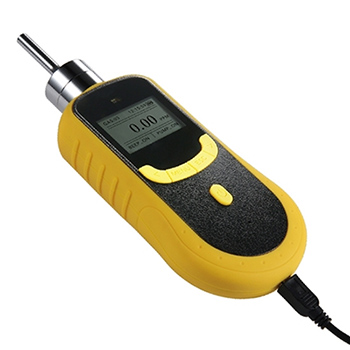Gas Detector Basics: Functions and Features
A gas detector is an instrument that detects gas concentration. The instrument is suitable for dangerous places with flammable or toxic gases, and can continuously detect the content of the measured gas in the air within the lower explosion limit for a long time. It can be widely used in gas, metallurgy, steel, coking, electric power and other industries where flammable or toxic gases exist. Gas detectors are ideal monitoring instruments to ensure property and personal safety. Therefore, today we are going to introduce gas detector to you. We hope that you can know why you need a general idea about gas detector after reading.
The gas detector adopts the high-performance catalytic combustion sensor and electrochemical gas sensor as the detection element. The gas detector has the characters of high sensitivity, fast response time, high explosion-proof rating and easy installation.
Gas detectors can detect:
Combustible gases: Natural gas (methane), liquefied gas, coal gas (hydrogen), acetylene, pentane, alkynes, acetone, toluene, alcohols, hydrocarbons, light oil, etc.
Toxic gases: Carbon monoxide, hydrogen sulfide, ammonia, chlorine, oxygen, phosphine, sulfur dioxide, hydrogen chloride, chlorine dioxide and other toxic and harmful gases.
Classification of gas detector
Electrochemical gas detector: The gas diffuses through the back of the porous membrane into the working electrode of the sensor, where the gas is oxidized or reduced. This electrochemical reaction causes a change in the current flowing through the external circuit, and the gas concentration can be measured by measuring the magnitude of the current.
Catalytic combustion gas detector: The catalytic combustion gas detector is a high temperature sensor. The detection element of the catalytic element is a platinum wire coil (φ0.025~φ0.05) wrapped with alumina and a binder to form a spherical shape and sintered. The outer surface of the element is coated with a catalytic layer of rare metals such as platinum and palladium. A current is applied to the platinum wire to keep the detection element at a high temperature (300~400℃). If it comes into contact with combustible gas such as methane gas during detection, methane will burn on the catalyst layer. The essence of combustion is the reaction between the adsorbed methane on the surface of the element and the adsorbed oxygen ions. After the reaction is completed, carbon dioxide and water are generated. The oxygen in the air is adsorbed and dissociated by the element, replenishing the oxygen ions on the surface of the element. The methane measurement method using the element can know the concentration of the combustible gas based on the principle of measuring the heat released by the combustion reaction of methane on its surface. The combustion increases the temperature of the platinum wire coil, and the resistance value of the coil increases. The detection element measures the change in the resistance value of the platinum wire.
Infrared gas detector: Molecules composed of different atoms have unique vibration and rotation frequencies. When molecules are irradiated with infrared light of the same frequency, infrared absorption occurs, causing changes in the intensity of infrared light. Gas concentrations can be measured by measuring changes in infrared intensity.
Device Features
Electrochemical and catalytic combustion sensors (combustible gas) or infrared are used.
Stable performance, high precision and fast response.
Low power consumption.
Performance
When the concentration of combustible gas in the monitored area reaches the alarm set value, the detector should be able to send out an alarm signal.
Alarm setting value: When the detector has two alarm setting values of low limit and high limit, the low limit alarm setting value should be in the range of 1%LEL~25%LEL, and the high limit alarm setting value should be 50%LEL. There is only one alarm. For detectors with set value, the alarm set value should be in the range of 1% LEL to 25% LEL.
Alarm action value: In all test items, the alarm action value of the detector should not be lower than 1% LEL. The difference between the alarm action value of the detector and the alarm set value should not exceed ±3% LEL.
Full scale indication deviation: For detectors with flammable gas concentration display function, the difference between the displayed value and the actual value should not exceed ±5% LEL.
Response time: For detectors with combustible gas concentration display function, the response time (t90) when the displayed value reaches 90% of the true value should not exceed 30s. Detectors without combustible gas concentration display function, the alarm response time should not exceed 30s.

